Back Support Belt
£29,95
Customers who saw this product also bought
Size chart
| SIZE | S | M | L | XL |
|---|---|---|---|---|
| CM | 70-83 | 84-92 | 93-105 | 106-115 |
| IN | 27.5-32.5 | 33-36 | 36.5-41 | 41.5-45 |
| WHERE TO MEASURE? | ||||
| The circumference of the widest area is measured: (*See image) Men: Waist Women: Hips *Note: If after measuring you are between two sizes, choose the larger size |
||||
How to use the back support belt?
Features of the back support belt

High Quality

Various Colors & Sizes
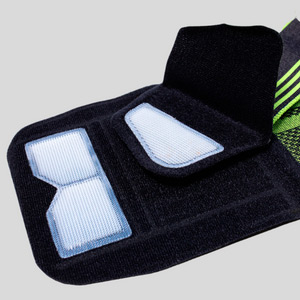
Extra Strong Velcro

Detachable Pad

Antimicrobial Fabric

Maximum Support

Unisex & Sport Design
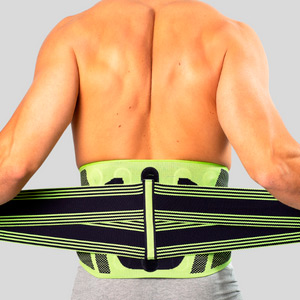
Elastic Fabric

Ergonomic & Adjustable

Gift: Wristwallet

Custom Packaging

Highlights
What are the uses and benefits of the sports lumbar support brace?
What is it for?
- Swelling: This garment serves as a retaining wall to keep post-operative and minor physical injury swelling under control. In the case of severe injuries, it is best not to use the lumbar support garment on its own so as not to hinder the natural inflammatory process.
- Acute or chronic pain: by keeping the temperature in the back stable, compression increases blood flow, which reduces chronic pain due to injuries. This therapy will allow the transmission of nutrients throughout the body, even in the area where the person feels the discomfort.
- Sciatica: the back support allows to reduce the movement in the back, this will prevent less pressure on the nerve root of the lumbar area. When there is less pressure, the nerves regenerate and it is possible that the recovery is more effective because when a nerve is damaged, it is necessary to go to surgery.
- Lumbalgia: in this injury, the back belt serves to prevent the muscles from completing their job of stabilizing the lumbar area. It facilitates the work of the muscle fibers and makes the load less, remember that all tissue needs to be at rest to avoid future recurrences of the same injury.
- Herniated disc: when a disc is displaced, the belt contributes to the least possible amount of sudden movements. It helps to keep the disc in place and prevents the disc from deforming, in these cases it is necessary to remove it and place a substitute of biocompatible material.
- Inguinal hernia: it will protect the membrane that covers the intestinal and urinary area, the back belt covers almost the entire waist and will only leave part of the groin exposed in both men and women. It will avoid the overload of work in the tissues located in that area and the pain of walking will not be so intense.
- Muscle contractures: if you need to keep active, the lumbar belt will reduce the tension load on the muscles and maintain a temperature according to their recovery. When cold therapy does not work, then the heat makes the fibers relax and you will feel the tension decreasing.
- Tension in the back: tension is energy accumulated by fatigue, the lumbar braces keep the muscles compressed to reduce excessive involuntary movements. If you are not used to using it, remember not to tighten the lumbar brace too much so that blood continues to flow.
- Overload injuries: this belt will prevent the spine from suffering from lifting excessive weight, without the body being prepared. It serves as a preventive tool, although if you help with your legs when lifting the heavy object, you will see that the back works less and you take better care of it.
- Contusions and trauma: internal hemorrhages, bruises and edemas are easier to control when there is compression by means of lumbar belts. These keep the muscles well grouped and at a temperature that will help them avoid the characteristics of trauma.
- Postoperative: after surgery, the use of back supports is recommended to keep organs and tissues in place during the healing process. It is also a useful tool for proper healing because it prevents the skin from moving and opening, which implies the loss of stitches.
What are the benefits?
- Support and stability: one of the central functions of the support is to prevent unbalanced movements that affect the integrity of the vertebrae and intervertebral discs. Remember that the vertebrae are separated by the discs, but in reality they are individual pieces with articulated movements between them and that efforts should always be made to keep them together.
- Compression: the force exerted by the back support belt helps to maintain a correct and firm posture, which helps the muscles and soft tissues not to overwork. They are useful for any area of your life that requires bending, stooping and twisting of the trunk.
- Pain relief: Severe pain is reduced when body temperature rises and remains constant. Regulating blood flow to the lower back muscles is part of the process of relieving pain and inflammation, both of which are associated when an injury occurs.
- Injury prevention: In your workday, if you need to twist, stand or sit for long periods of time, it will help you better distribute the workload on your back. In the sports world, help to support the demands of the discipline you practice.
- Improves postural hygiene: walking, sitting and standing are actions that we often do incorrectly, this back support helps keep the spine straight and protects the spinal cord from compressions that can alter its function. When the spine is deviated, it can adopt that posture for a long time and cause more injuries.
- Reduces tension: if muscles are overstretched, high tension builds up in them, so back supports belt reduce muscle workload. These garments take care of the flexibility and elasticity of the lower back muscles.
- Accelerates recovery: after a mild or moderate injury, the lumbar support reduces involuntary movements that compromise the damaged structures. They provide the necessary rest for the back; when the back does not relax, there will be no possibility of a better recovery from the injury.
- Minimizes vibrations: with the back supports, the probability of cramps decreases, which generate vibrations in the fibers and activate them to the point of generating significant wear and tear. Any movement of rotation or inclination will cause the fibers to vibrate with the stretch.
- Maintains body heat: The material of the back belt should allow to increase the temperature without sweating, this is because they are made of breathable fabrics, but have the ability to increase and maintain proper body heat.
When to use?
- Daily life: this back support will help you to modify your posture in your daily life; however, no type of support should be used daily or all day long, since when the back brace is used in excess, it ends up causing permanent problems in the circulation.
- Work activities: they are excellent to help people who stand or sit all day. In addition, they reduce muscle work when lifting heavy objects. They can also be used when you have a minor sports injury and need to remain active in your day-to-day dynamics.
- Golf: reduce the tension in the spine during the swing or hit the ball. It prevents repetitions of this movement from causing injuries. With experience and over the years, hitting the ball can cause problems such as disc displacement and spinal cord compression.
- Running: the support maintains stability in the back in each stride when jogging or running, prevents the organs suffer with the imbalance of the spine. Lumbar supports protect the internal abdominal organs from the shock of jogging for long periods and stretches, it is not advisable to wear a support in all races.
- Cycling: it corrects the irregular postures of the cyclist when an injury forces an unbalanced work of the back and hip. It also protects the lumbar area because of the weight that it lumbar belts the whole body in an inclined position, when the back has a support, the work of the legs is better.
- Yoga and gymnastics: prevent injuries and intense postures hinder the natural movements of yoga and gymnastics. It serves best as a corrective tool, since it is not recommended to use back braces when practicing these sports professionally.
- Tennis, badminton and racket sports: they help the back to relax when the player finishes an exhaustive training or ends a match with a lumbar injury. It is also not recommended to wear a back brace on the court to try to hide an injury, as this can lead to greater problems.
- Crossfit, weightlifting and Fitness: lowers the probability of contractures and low back pain due to excessive weight lifting or when the athlete is not experienced enough. It also helps to maintain correct body posture for better athlete performance.
- Climbing, hiking and mountain sports: when the weight of the body falls on the arms and shoulders, the back also tries to exert pressure to achieve balance. In case of injury, it helps to relax the lumbar muscles so that they can regenerate better.
- Team sports: if you play sports such as soccer, basketball, handball, rugby, baseball, lacrosse, field field hockey and volleyball, among others, this training brace can certainly help you play your favorite sport while protecting your back from injury.
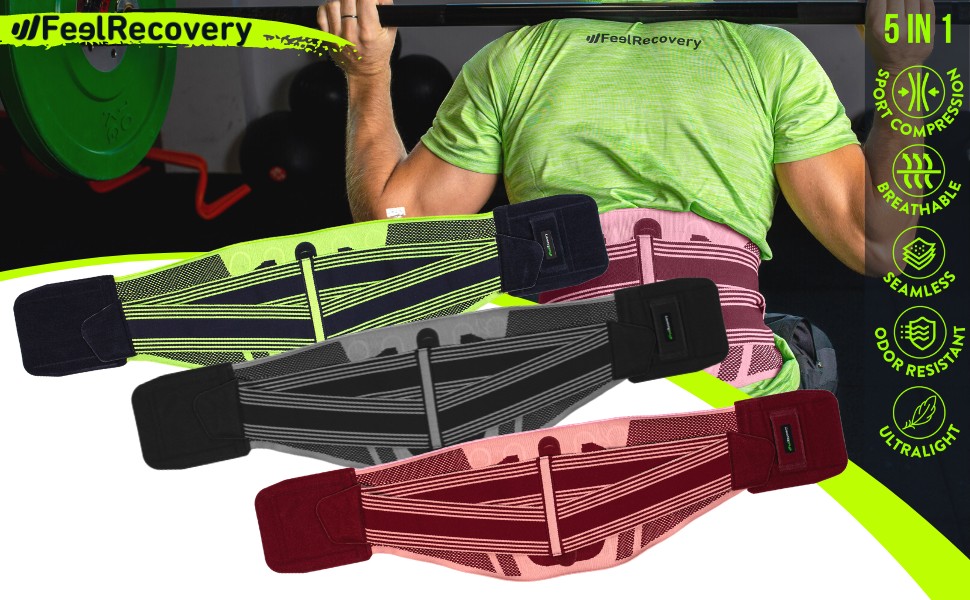
F.A.Q: Frequently Asked Questions
How do I know what my sports lumbar support belt size is?
It is advisable to stand to take accurate measurements, avoid doing it after eating or when you feel full, that alters the measurement. Remember that if you feel a tingling in the lower back, then the back support is too tight, so having the accurate measurement will be essential to get the result you are looking for.
How to wash and care for your back and waist support?
The lumbar supports should not be washed every day, you should only place them in water and expose them to cleaning chemicals only when it is necessary because there is bad odor, because it has been stained and because it is full of dust that can generate allergies.
- Wash in cold water on delicate programs
- Hand wash preferably
- Do not bleach
- Do not tumble dry
- Do not iron
- Do not use soap with softeners
- Do not bleach
How do I know if the lumbar support is good for me?
What is the difference between a sports brace and an orthopedic brace?
What is the difference between a sports back brace and a slimming belt?
108 reviews for Back Support Belt
Featured reviews
Update 6 Monate später: die Befestigung haben sich gelöst - sehr schade. Kontakt zum Kundendienst direkt, superschnelle Kontakt Aufnahme - Gurt wurde ersetzt - ich bin weiterhin begeistert und gebe eine klare Kaufempfehlung!!!! Ich habe mir diesen Gurt geholt weil ich täglich Schmerzen im Lendenwirbel Bereich habe und ich kaum mehr längere Spaziergänge machen könnte, geschweige arbeiten im Knien. Vorher habe ich mich viel Tapen lassen, aber ich muss sagen durch den Gurt sind die Schmerzen viel besser geworden. Arbeiten im Garten sind nun kein Problem mehr. Zum Gurt: wirkt hochwertig verarbeitet, dadurch das man 2 x verschließen muss kann man die Wirbelsäule super stabilisieren. Klar merkt man das man einen Gurt Anhat und manchmal zippt es hier und da wenn er verrutscht, wer aber echte Rückenschmerzen kennt, wird dies gern in Kauf nehmen Von mir klare Weiterempfehlung
Je suis fan, jai 25 ans et je souffre beaucoup de mal de dos a cause de mon travail, je suis serveuse, je porte souvent des fûts et des caisses ce qui fait que a la fin de journee jai des douleurs insuportables. Je mets la ceinture et avec la compression que elle fait mon dos reste droit, jai l'impression de porter moins de poids sur le fond de mon dos, ma posture est droite et jai pas les epaules qui tombent vers lavant, elle as aussi un triangle derrière pour plus de support mais dificil a bouger avec, vous pouvez aussi l'enlever, et il y a une petite ceinture de plus pour renforcer le support, je suis contente avec mon achat et je recommande
très bonne ceinture lombaire mais si c'est hyperalgique elle ne répondra pas à votre demande je l'ai utiliser après avoir utiliser une ceinture avec des baleines quand c'était hyperalgique , j'ai du recommander une taille en dessous car elle taille grand (au début j'avais pris du m et celle en taille s me correspond parfaitement pour (1m62 et 55 kg) le maintien est souple donc idéal en prévention pour moi elle ne convient pas en phase hyperalgique mais à vous de tester , la matière est de qualité
Only logged in customers who have purchased this product may leave a review.










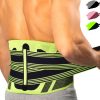


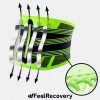



















Aslanidis –
Super – Super
MIKE –
Ceinture dorsale – Oui, franchement c'est une ceinture super, elle maintient très bien lebas du dos, merci
Client Kindle –
Tiens bien le bas du dos. – Pour le travail de coupe d’arbres c’est parfait. Un peu lourde par rapport à d’autres utilisées par ailleurs. Par temps plus chaud elle va être plus difficile à porter
Carol Albaiges –
Cumple su función – La faja cumple su función, se ajusta bien a la zona lumbar y permite seguir con tus actividades
Jättenöjd med detta bälte. Ger bra stöd och sitter skönt –
Ryggbälte – Bältet sitter skönt och ger bra stöd. Det är det skönaste och bästa bälte jag har haft
Francesco –
Ottimo – Aiuta molto lo consiglio a tutti
Giancosimo –
Ottimo prodotto – Facile da utilizzare e resistente
Waltraut Schmitz –
Grösse knapp – Bei mir war es nicht schmerzlindernd.
Marco –
Ottima fascia – Ottima per i mal di schiena ti sorregge e ti senti più leggero, ottima anche se viene indossata durante la palestra o la corsa
Maria –
Supporto zona lombare – Ottimo supporto per la schiena
TX22HARLOK –
Fascia lombare – Perfetta
binet –
Très bon maintien – Produit de qualité. Maintien très bien le dos. A voir sur le long terme.
nino –
Très bien. – Formidable, soulage effectivement...
Ruben –
muy útil – La recomiendo
Francesco –
Eccezionale – Ho comprato questa fascia in quanto soffro di ernia al disco, la uso quando inizio a sentire infiammazione e mi fa stare immediatamente meglio. E' possibile comporla ed avere minore rigidezza o maggiore. Comoda anche da indossare da seduti. Speriamo duri nel tempo.
Abdul Sammad Khan –
Gute Qualität – Auf jeden Fall empfehlenswert
manuela pereira –
Bon maintien. – Très bon maintien, apaise les douleurs lombaires. Un indispensable.
Ülkü –
Tavsiye ederim... – Süper ürün,daha önce Orthopädie doktorum bir kaç ürün tavsiye etti ve kullandım. Lâkin bu ürün kadar memnun kalmadım. Çok teşekkür ederim. Saygılarımla
Ratti –
Top! – Seit dem ich ihn verwende sind meine Kreuzschmerzen besser geworden. Bin super zufrieden. Kann ich jedem empfehlen der viel steht, bzw schwer hebt. Hätte nicht gedacht das er so gut hilft. Der Klettverschluss wirkt auch sehr hochwertig. Denke hält eine ganze Weile.
Samira aznina –
Samira – La uso a diario en casa, bien 👍 😉 👌